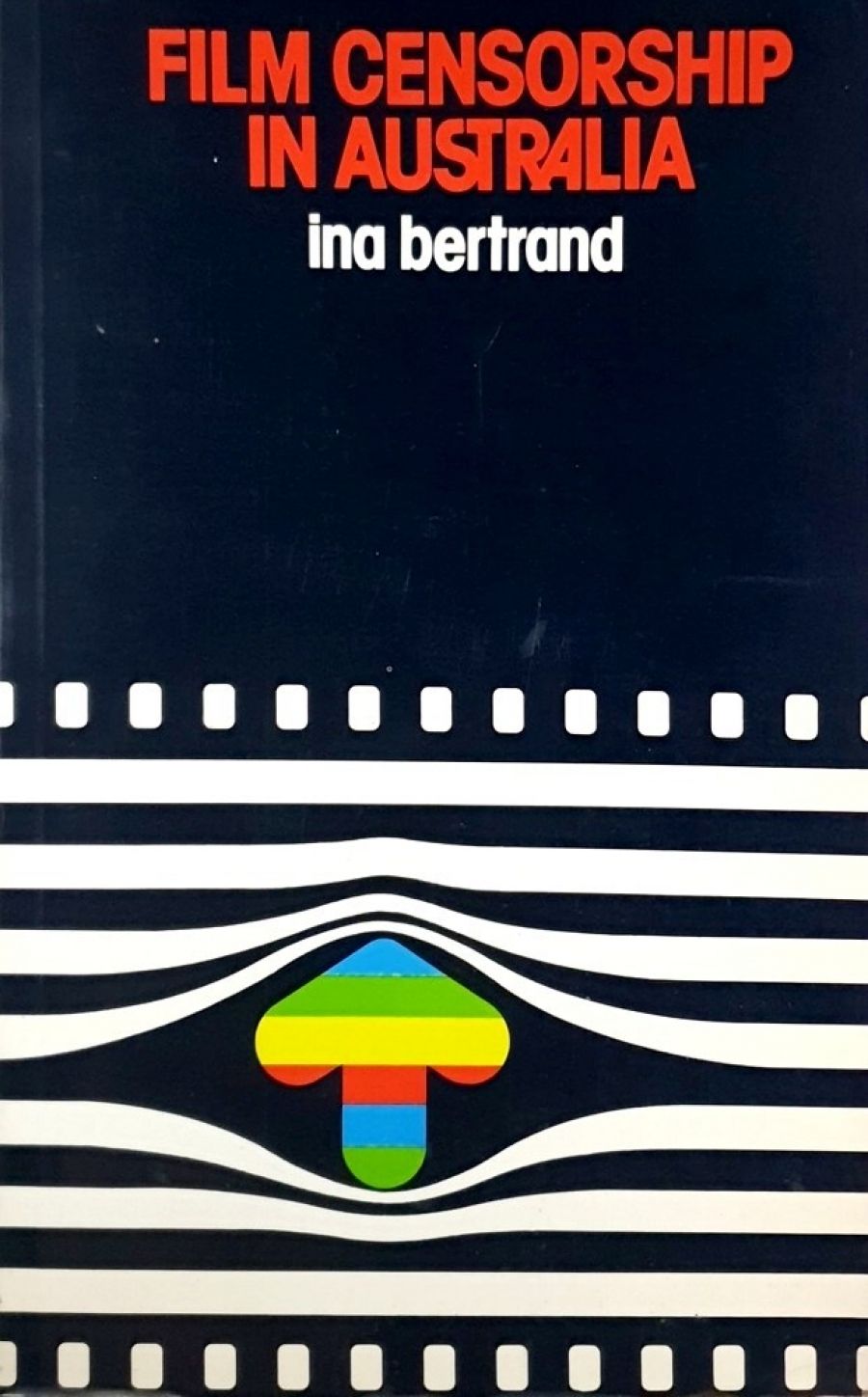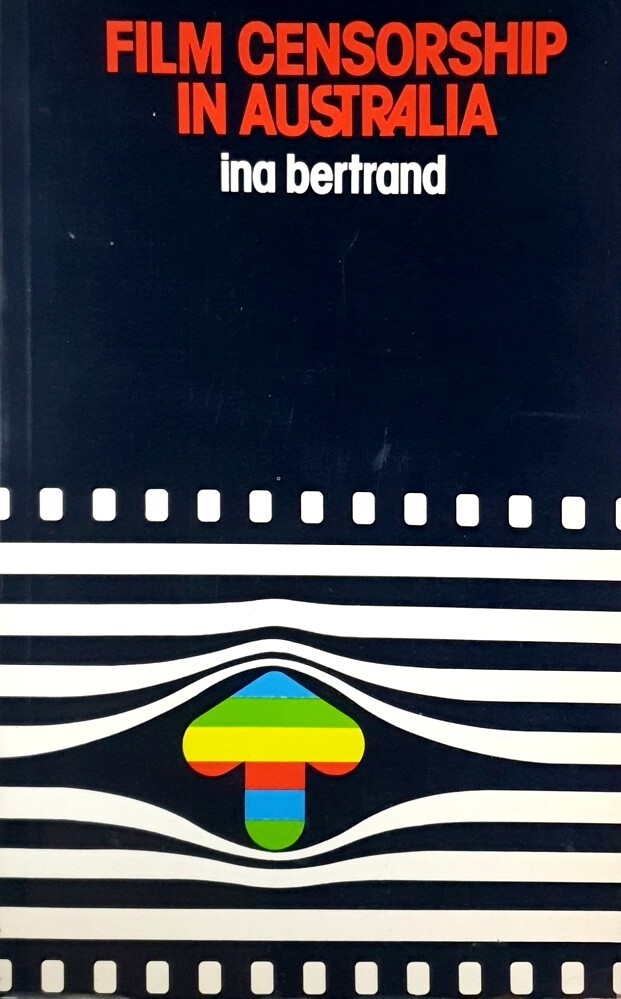
- Free Article: No
- Contents Category: Film
- Review Article: Yes
- Article Title: Cutting up Pictures
- Online Only: No
- Custom Highlight Text:
It is difficult to decide whether this wellresearched book is an important addition to the media history of Australia, or whether it deserves a place among the chronicles of the country’s moral development, or even as another testament to the differences and divisions that are created by federal systems of governance. Ina Bertrand has diligently collected all the details of lust, licence and legislation that have beset the entertainment industry over the past century and a half. She painstakingly leads the reader through the reasons and ramifications behind the Acts of State and Commonwealth Parliaments (starting with the first Public Entertainment Act in New South Wales in 1828) by which successive attempts have been made to regulate how and what the Australian public were allowed to see.
- Book 1 Title: Film Censorship in Australia
- Book 1 Biblio: University of Queensland Press, $17.95 hb, $9.95 pb, 200 pp
- Book 1 Cover Small (400 x 600):

- Book 1 Cover (800 x 1200):

If it reads like a sorry tale of confusion and contradiction, we should realise that this subject is one of the thorniest that afflicts all societies which try to combine freedom of expression with some limitations ‘in the public interest’. Australia, which has always been in a position of having to import many if not most of its entertainments from abroad, where standards of sophistication may be different, has found it hard to define acceptable media guidelines, and the Australian Broadcasting Tribunal’s 1977 report on self-regulation is only the latest in a long line of documents that try to encourage indigenous creativity while protecting the viewing public from ‘excesses’ of various kinds.
It is, in fact, a book that will probably prove to be more valuable in a political sense than for its relevance to any media studies course. The saga will be of greater use to lawyers and a few academics than to those who study film or learn the practical uses of the medium. Standards and attitudes change, and past practices provide few generalisable precedents for present-day filmmakers. Censorship has always been a crude instrument of control, and Dr· Bertrand recounts many instances where commonwealth and state censors applied quite different criteria to the cutting or banning of certain films, and others – such as the case of a Swedish film ‘I Love, You Love’ in 1969 – where the censorship made Australia ‘a laughing-stock both at home and abroad’.
Australia has had only six Commonwealth Censors in 50 years. Their task has by no means been limited to matters of sex and violence in films, but also at times has involved the preservation of some kind of balance between opposing pressure groups. On the one hand, an industry claiming both artistic and commercial imperatives, while on the other hand political, religious and other community groups that sought to curtail any portrayal of people or incidents that might lead to crime, the devaluation of marriage, racial intolerance, the encouragement of obscenity or the corruption of children. The book is full of examples of how these worthy objectives became the victims of both bureaucracy and bigotry at various times in Australia’s history.
One of the difficulties of books which set out to deal with motion pictures is that illustrations, however well selected, can never convey, in static form, the examples of undesirable or sexually unacceptable visual sequences to which they relate. Dr Bertrand has had to be content, in most cases, with available stills that scarcely do any justice to the episodes the films were trying to present. She refers in her chapter on ‘The Permissive Society’ to the inauguration, by Don Chipp, of the ‘daring system of publishing regular lists of titles cut or banned, with details of lengths of cuts and brief descriptions of the reason in each case’. These were then published in the Government Gazette. This practice, in fact, had been normal in some other countries much earlier, such as India, where the Government had followed this procedure both before and after Independence. The words were often more suggestive than the actions they described.
Australia is, nevertheless, and it is very evident from this book, basically a very moral society. Migrants, it seems, tend to carry their social and religious orthodoxies with them, and to suspect new styles or philosophies. Although the author contends that Australia ‘has followed censorship trends overseas, with a time lapse of up to five years’, her survey shows that Australian public opinion, and also official opinion as expressed through legislation, have exemplified all the national uncertainty and lack of self-confidence that has been apparent in other forms of media. Films have frequently been regarded as harbingers of incipient moral revolution, and when the new Australian standards are exemplified by the exploits of Barry MacKenzie, who can doubt that they may have been right? Fortunately, other and better examples of the country’s creative capacity for good filmmaking have since helped to dispel the poor image or the national values which such productions have typified.
The book touches upon, but does not deal at length with, the repercussions of film censorship upon the standards of television presentation that may follow. Films may now settle more securely in their various accepted classifications, but there are signs among some better educated young people that they may increasingly support stronger censorship and control over broadcasting, especially for children. Self-regulation seems unlikely to be enough. Dr Bertrand should have plenty of material for another volume.


Comments powered by CComment